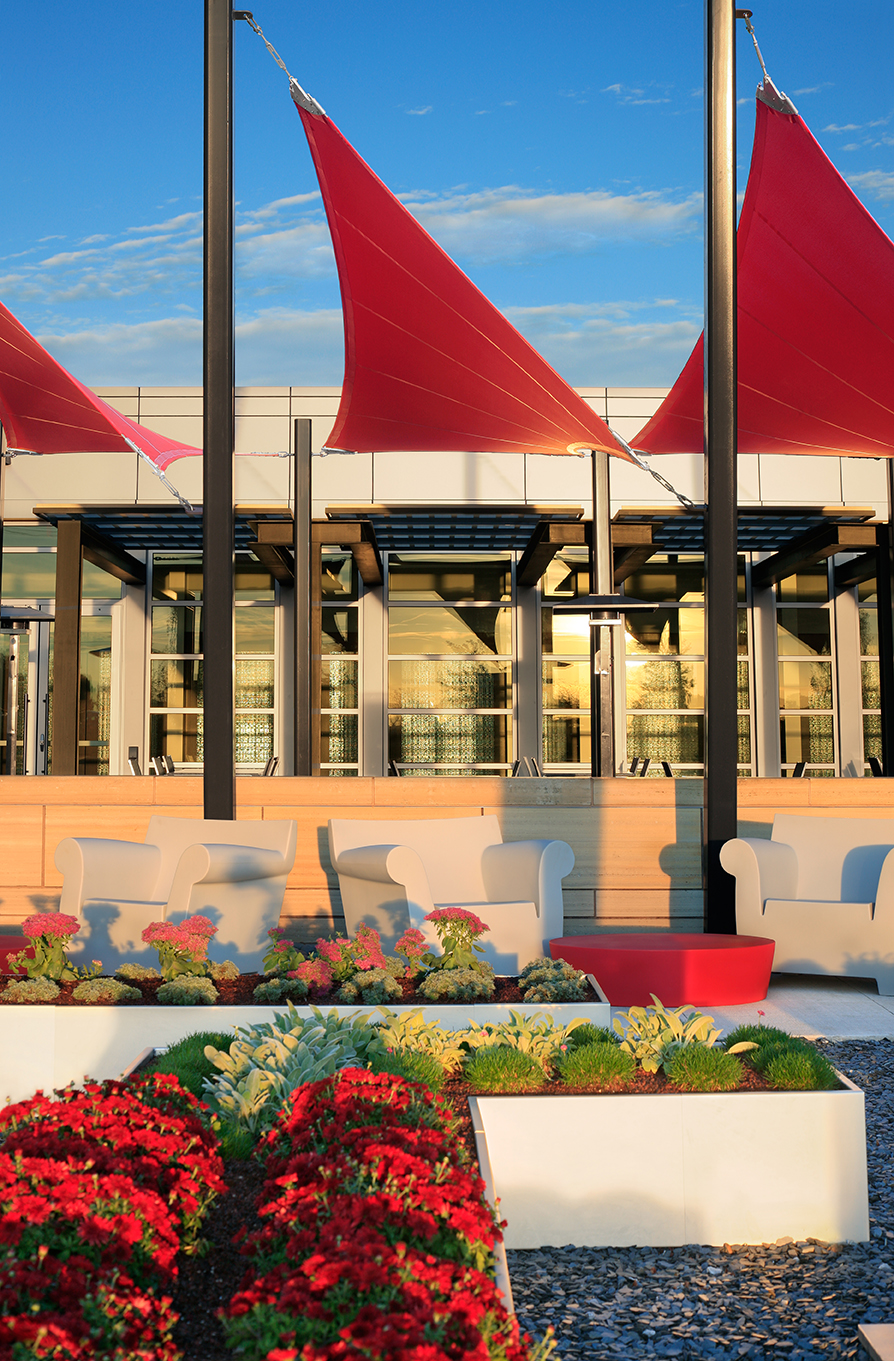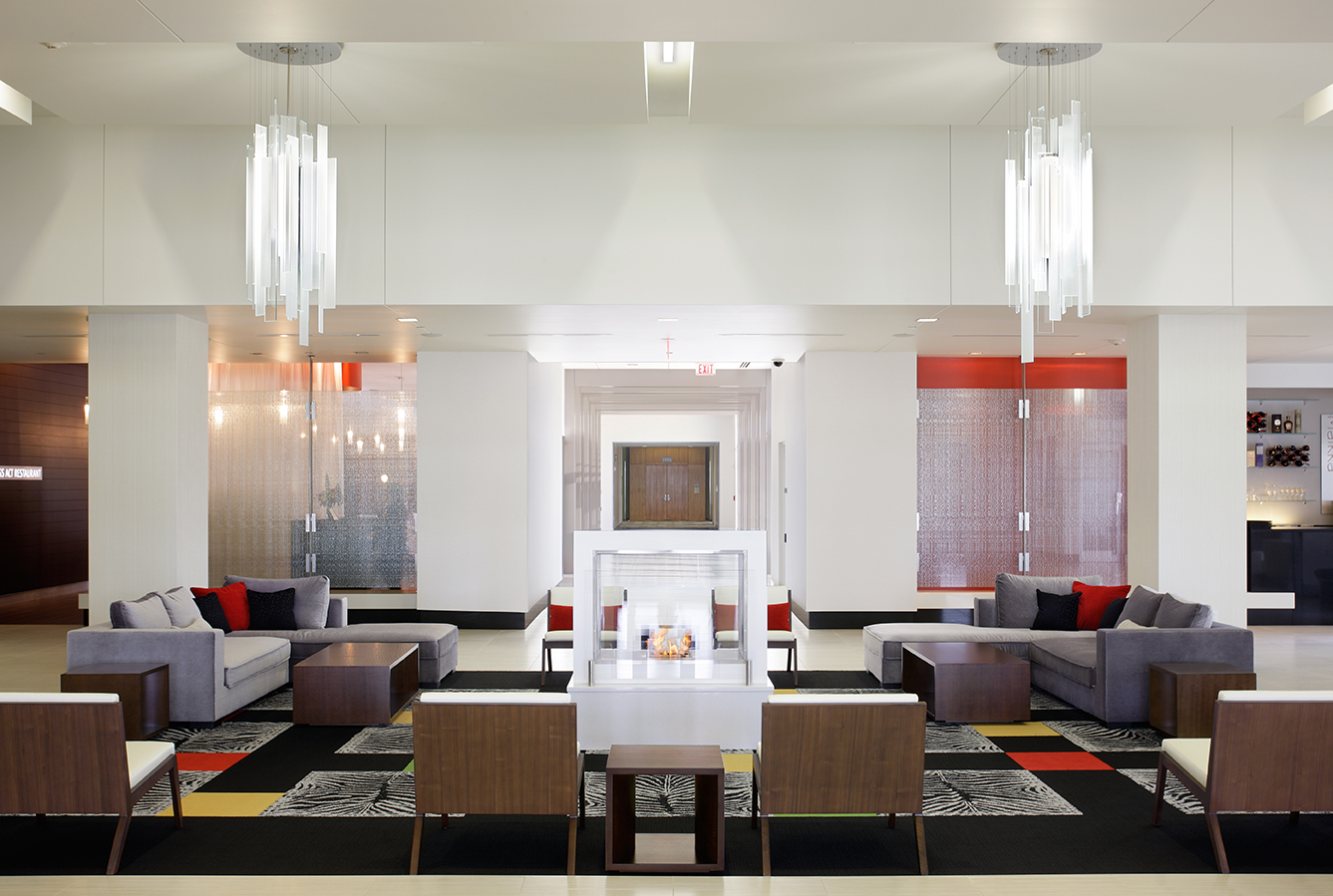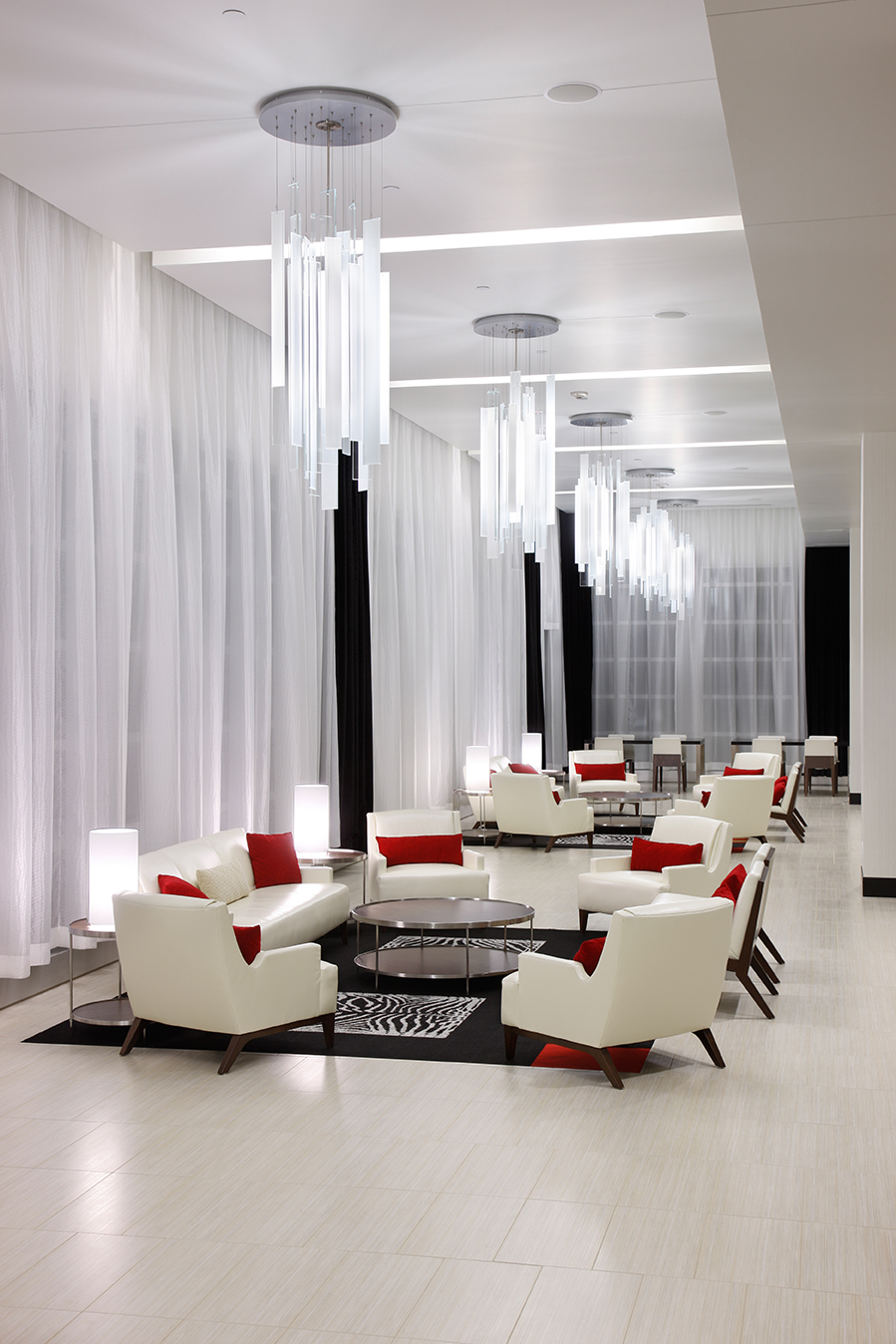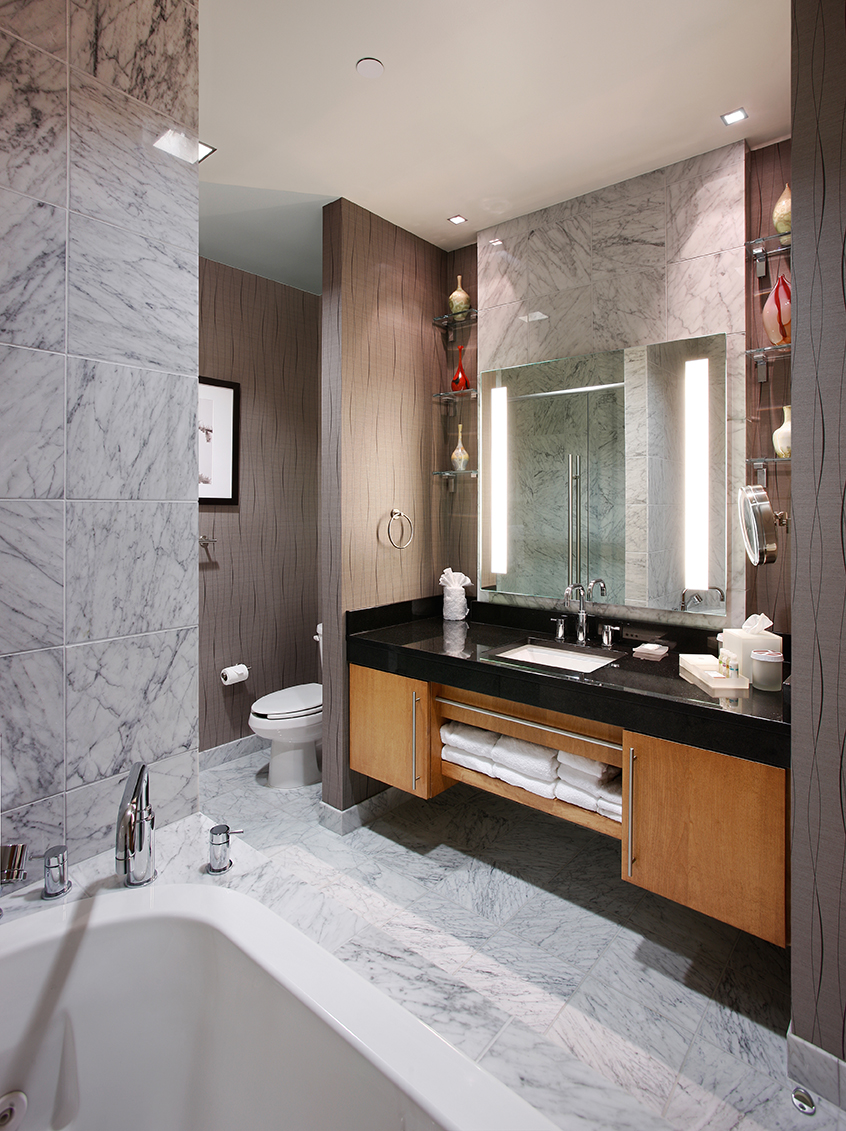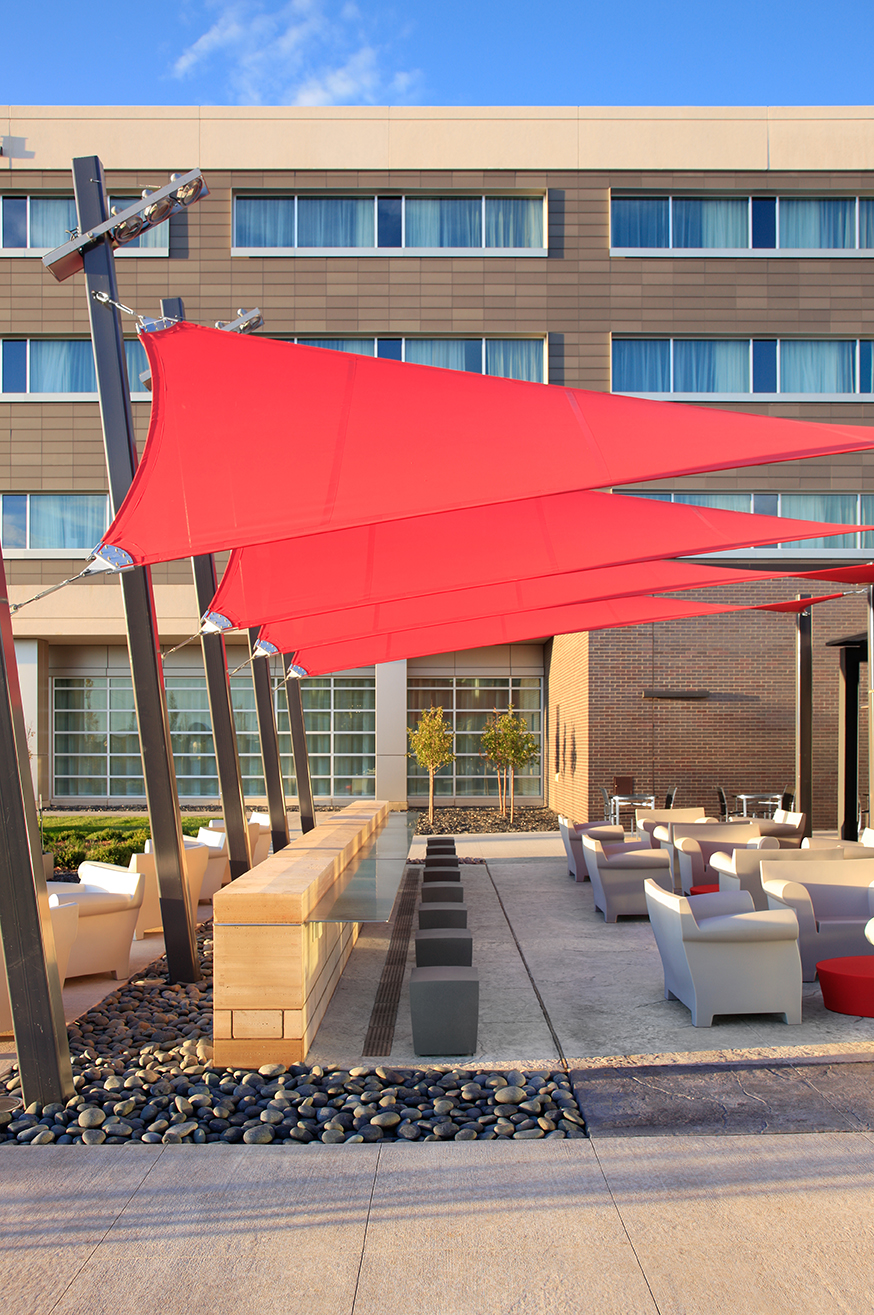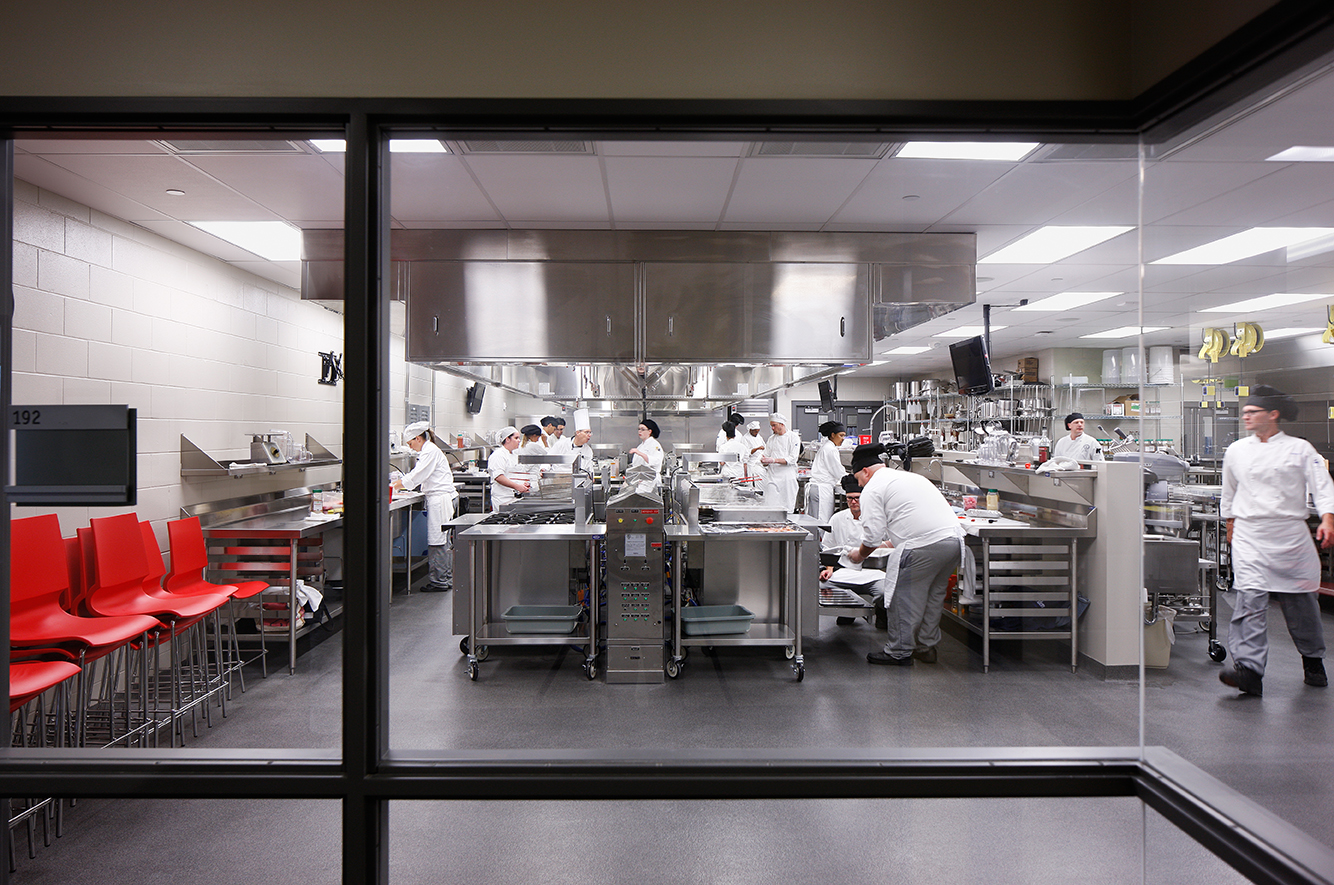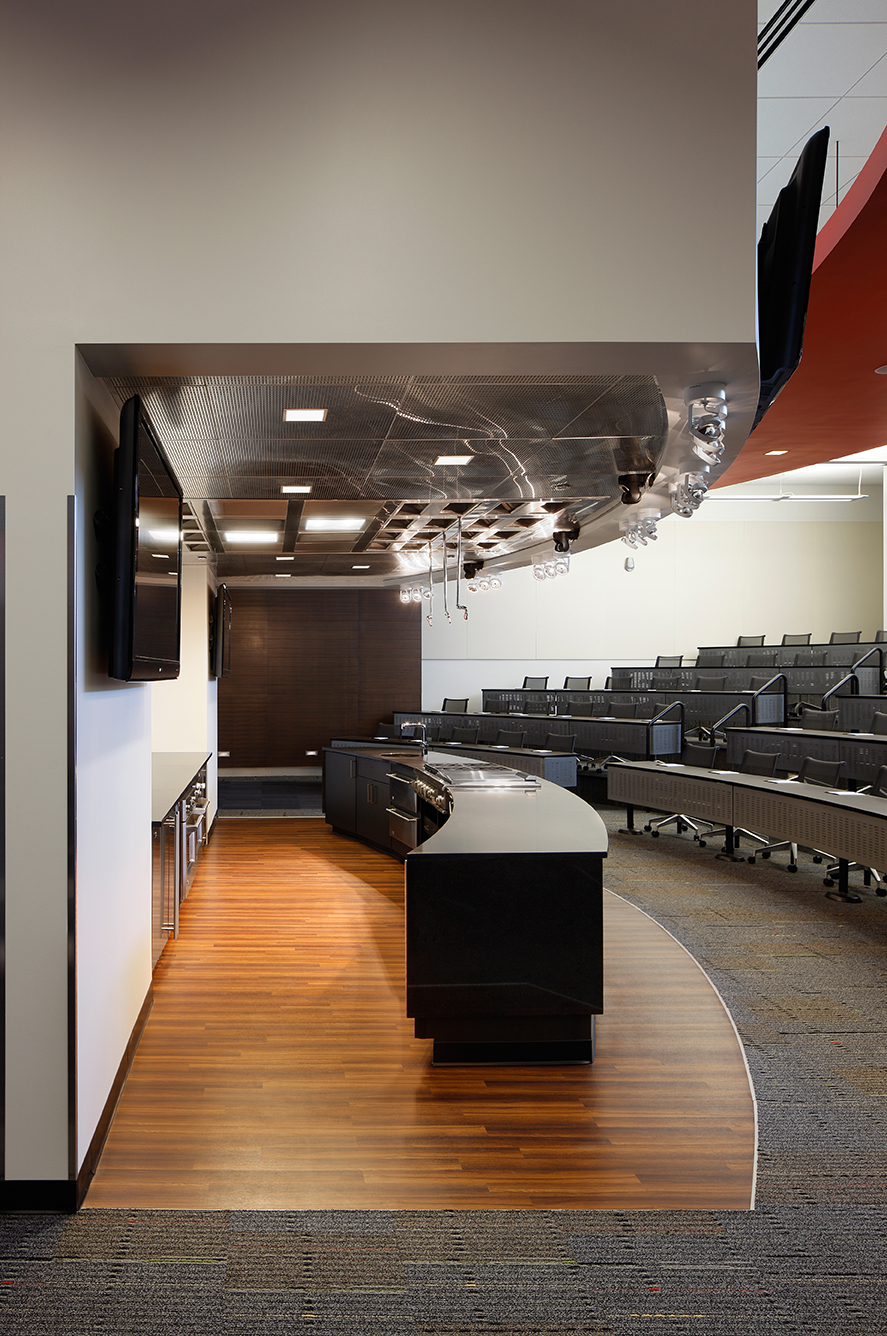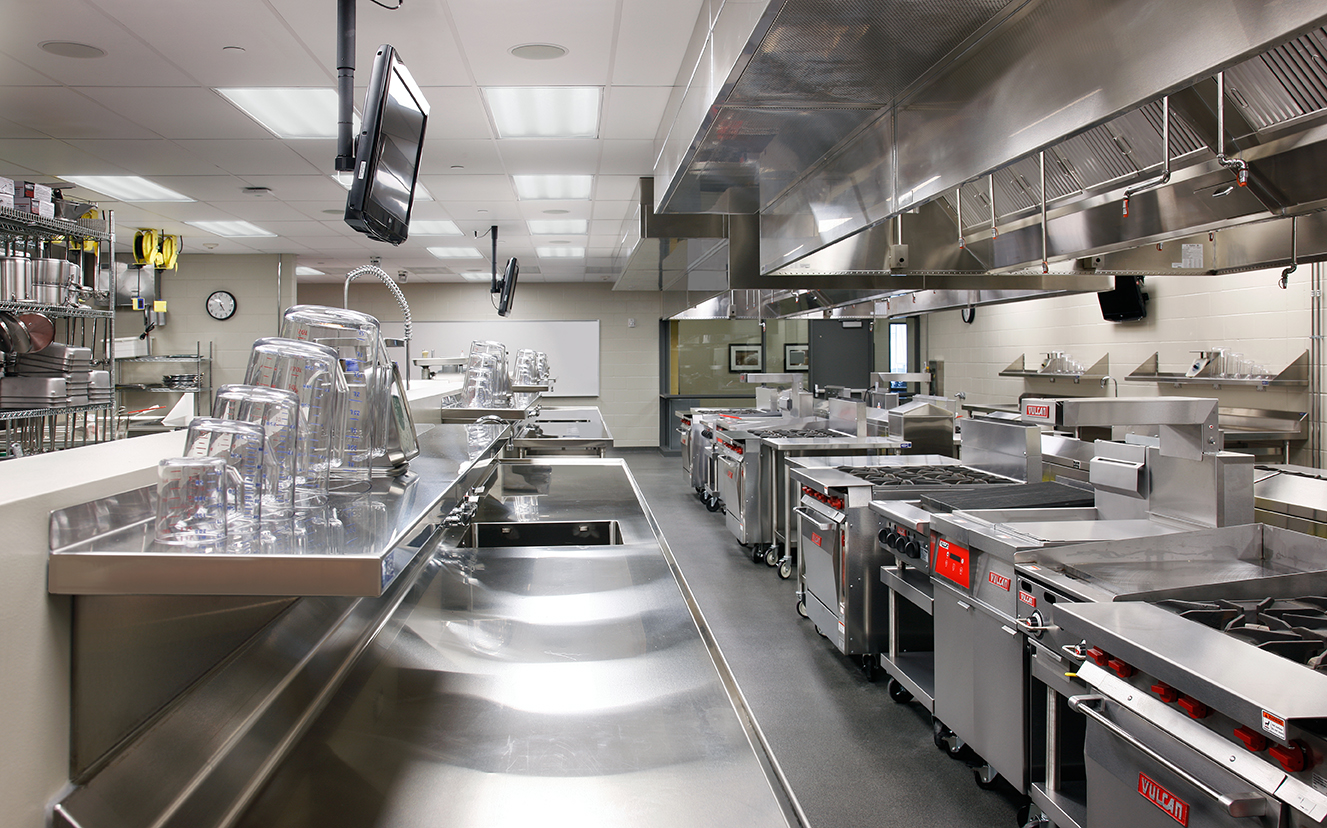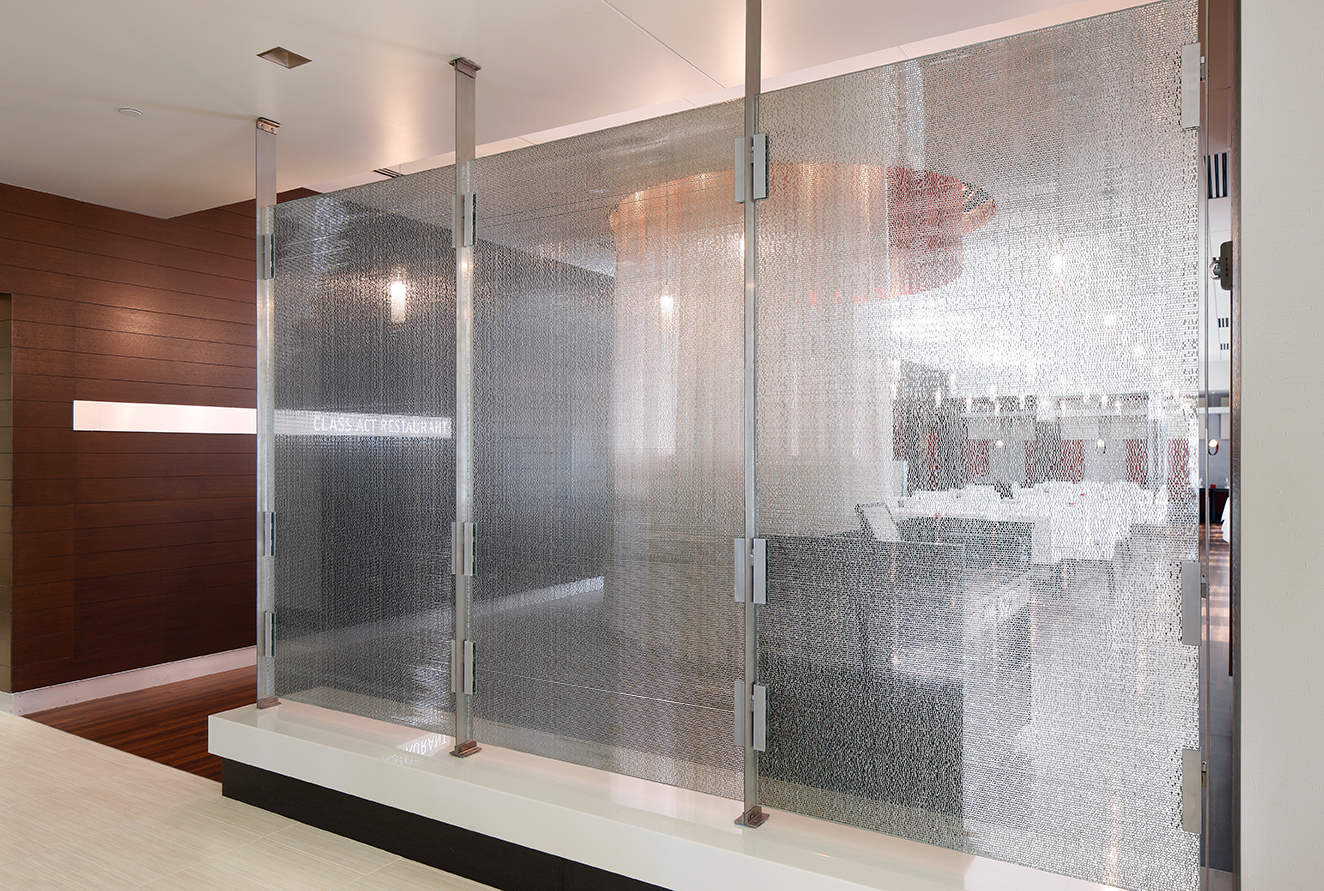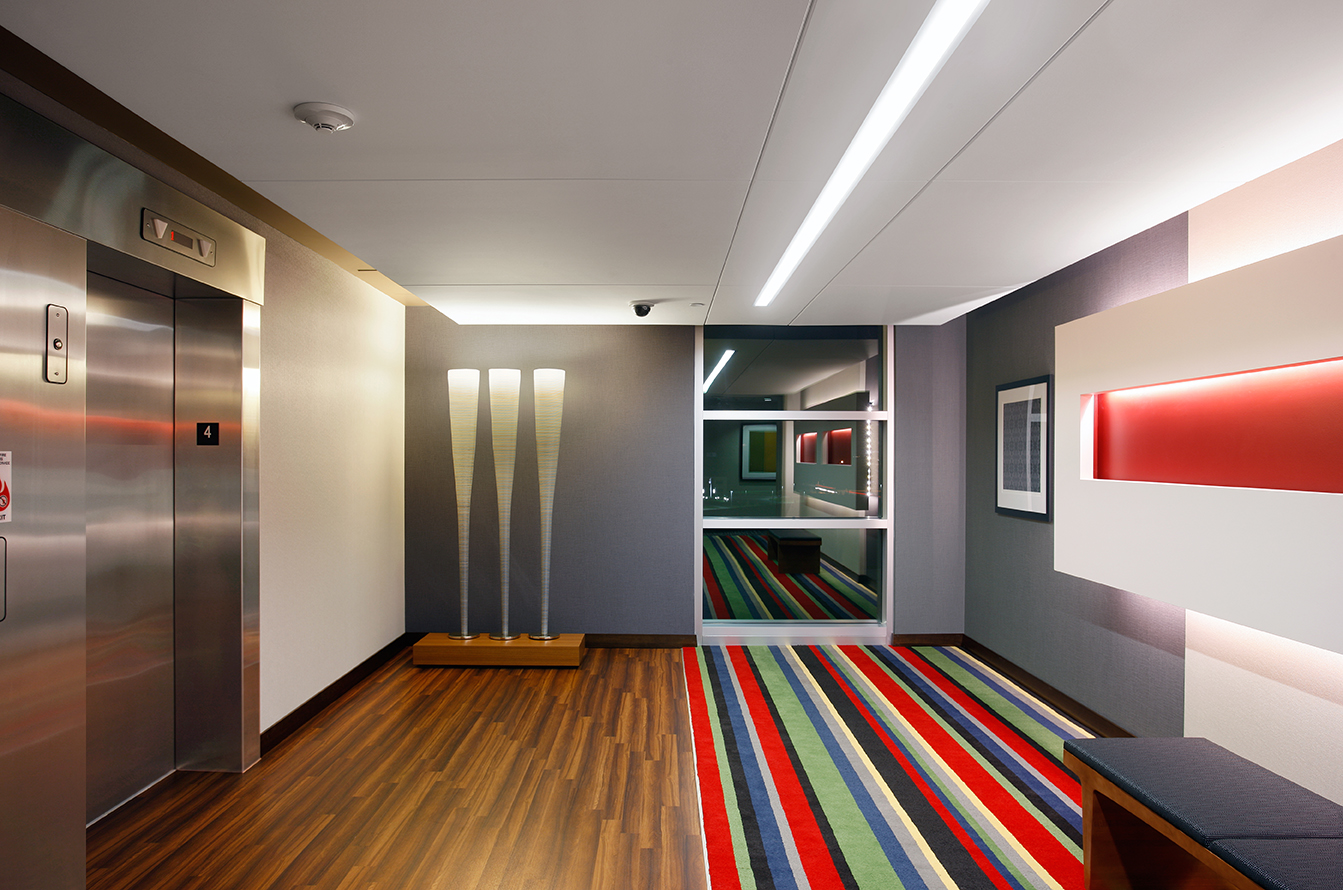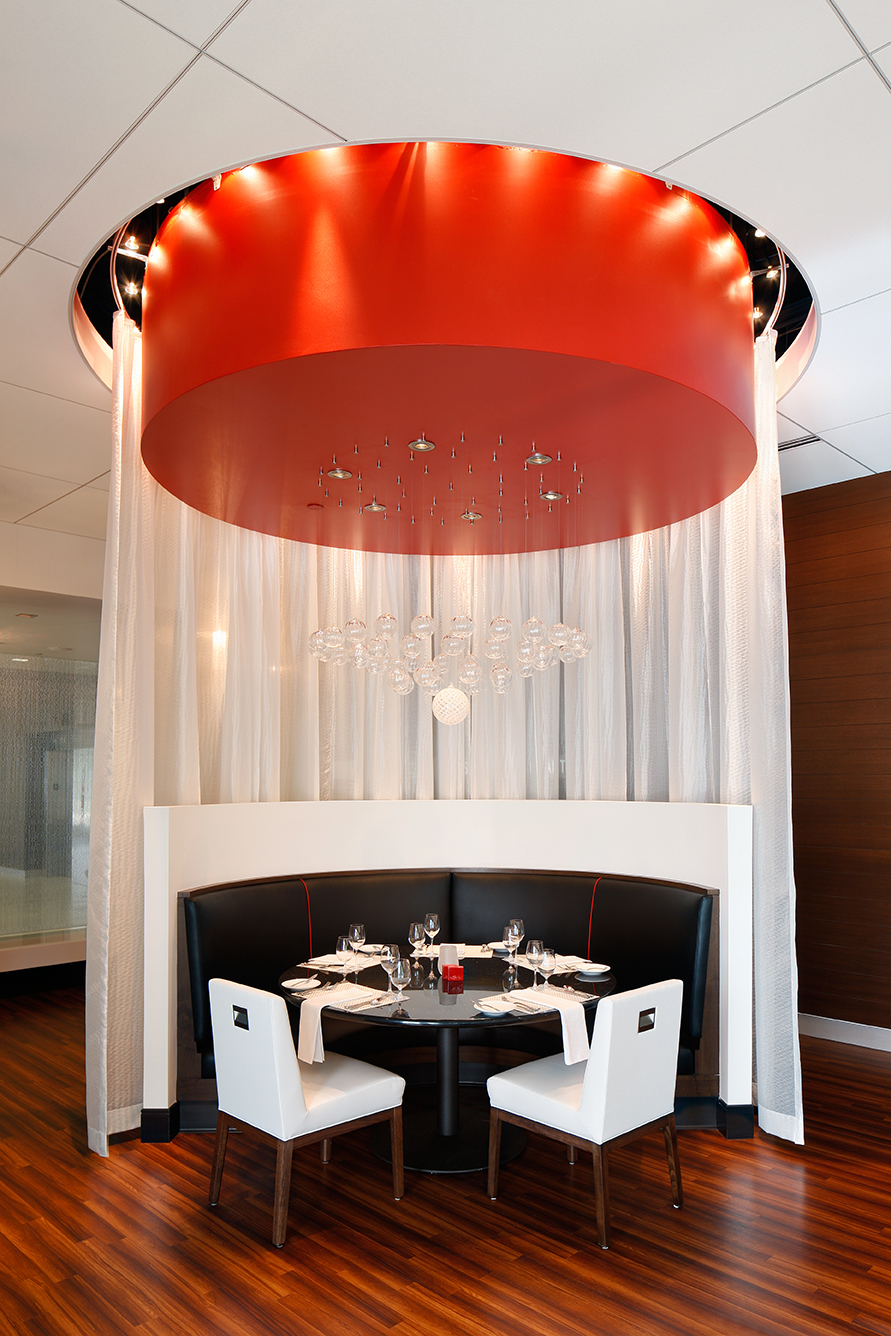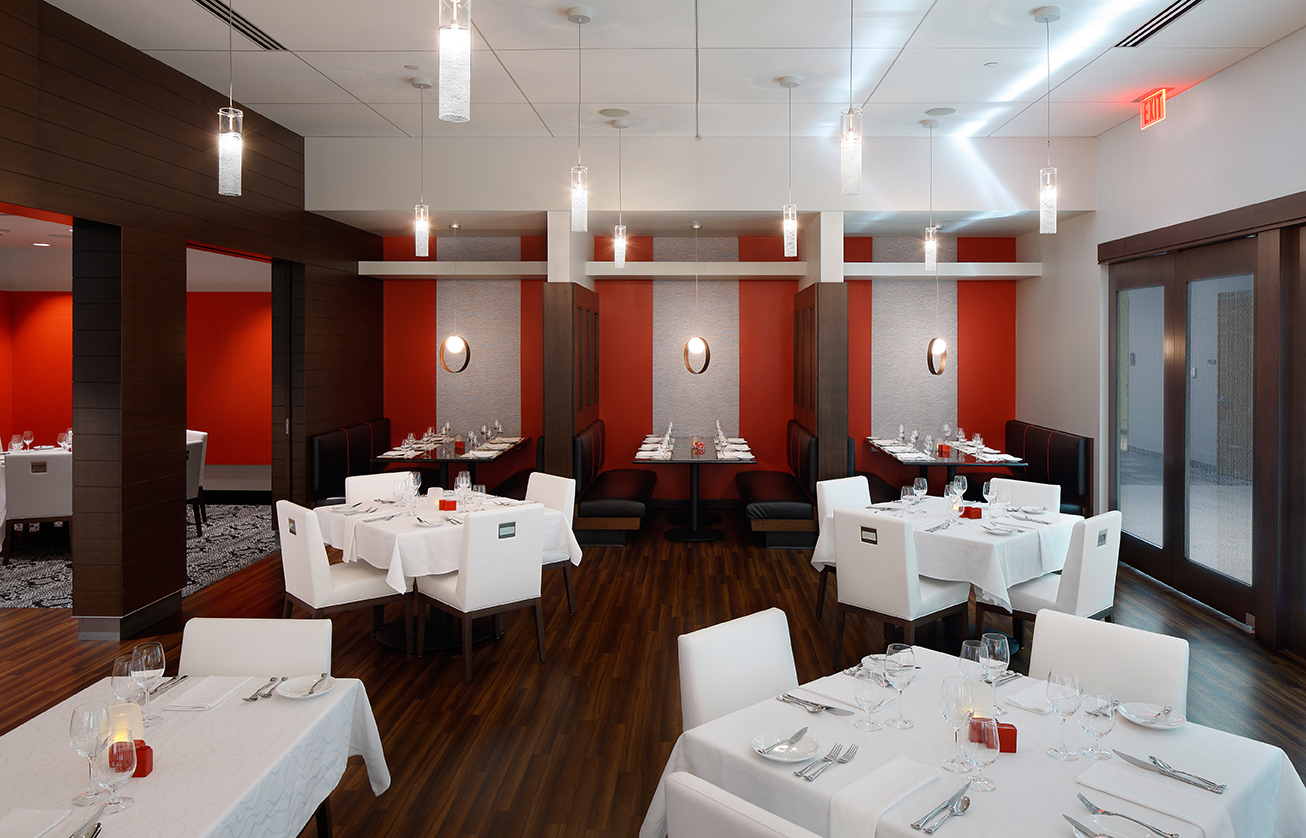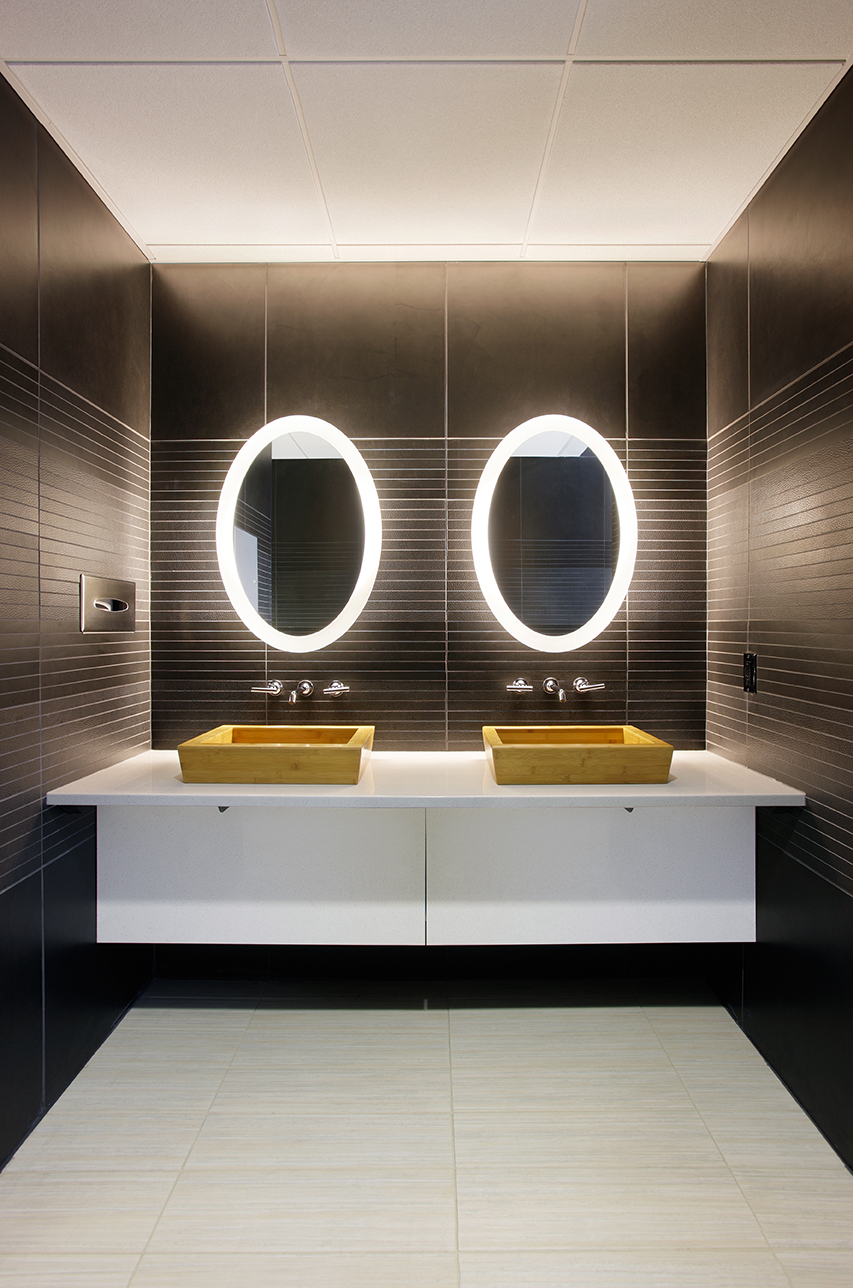The Hotel at Kirkwood

-
ClientKirkwood Community College
-
SQ. FT.152,416
-
Budget$24,450,000
-
Market
-
Year2009

- 2011 · International Interior Design Association, Great Plains ChapterGold Award
- 2011 · International Interior Design Association, Great Plains ChapterBest of Show
This full-service hotel anchors a larger convention complex and education center. It contains seventy-one guest rooms on three floors, including three presidential and three executive suites. Built on the campus of a community college, the hotel operates as a real-world learning laboratory for hospitality and culinary arts students. The project incorporates three teaching kitchens, an on-site open-air gourmet restaurant, various conference and classroom spaces, administrative offices, student lounge space, and a 104-seat culinary amphitheater for demonstrations and classes.
The design goal was to provide students with the experience and quality of high-end hospitality environments, providing a unique opportunity to move from the classroom to a 5-star restaurant and hotel environment seamlessly. To equip students with skills applicable to a range of career options and markets, it was necessary for the hotel and restaurant to achieve the highest quality of service and amenities. Critical to the project’s success was meeting both the requirements of the hotel as a teaching facility and the expectations of real guests. In addition to its educational benefits, the new hotel also presents a growth and recruiting opportunity for the college, while aiming to set the bar higher for hospitality in the region.
The client’s vision for the hotel was to be “hip, urban, and trendy” while sticking to the tight constraints of a community college budget. The design employs plentiful daylighting, vibrant color use, and clean detailing that seeks to create a “European” boutique experience not common in the area. The exterior is comprised of glass, a metal panel rain screen, and a terra cotta rain screen. Limestone and dark brick are used as a secondary pallet to contextually relate to building materials found and commonly used in the region and on campus. High-quality interior finishes enhance the upscale experience for guests, while using durable materials that simplify maintenance over time. The restaurant features diverse table arrangements and seating types to give students familiarity with different dining layouts and prepare students
for larger markets, while offering the community a new option for high-end dining.
Circulation throughout the facility is intended to make guests aware of the educational components behind the hotel and restaurant’s operation. For example, the educational wing, while separate, has direct access to the hotel lobby and is designed to allow guests to pass through. The lobby space is flexible and accommodating to the hotel, culinary, and conference centers. The furniture plan utilizes varied seating groups with lounge furniture, tables and chairs, and a range of accessories which include a modern, stand-alone hearth for social and conference break-out.
Sustainable Design Features
The Hotel at Kirkwood Center incorporates several sustainable and energy saving strategies. These include a 200 well geothermal heat exchange system, supplemented by high efficiency boilers and thermal ice storage. Ice is frozen overnight in nine ICE KUBE units when energy rates are lowest, and used to cool the kitchens and other areas during the day when electric rates are much higher.
The kitchens are equipped with variable flow exhaust hoods that automatically adjust to the amount of heat or smoke detected by sensors, minimizing the removal of condition air. Two separate air handling systems service the kitchens — one providing fully condition air for temperature control, and one with partially conditioned air to replaced air removed by exhaust hoods. Motion sensors detect occupancy of classrooms and other spaces, turning off lights when no one is there.
A wider temperature fluctuation is permitted at night in offices and other spaces only occupied at certain times of the day. A similar system detects when hotel guests are not in their rooms. Also vacant guest rooms can be put into a dormant state that will automatically be reactivated when checked in.
Many interior finishes and furnishings, such as carpet, ceiling panels, flooring, as well as structural framing were made with recycled content. Low E Glazing was used on windows to improve the building’s energy efficiency. On site native grasses were used in detention areas and for landscaping. Storm water is retained on site and parking lot lights minimize light pollution to adjacent properties.
